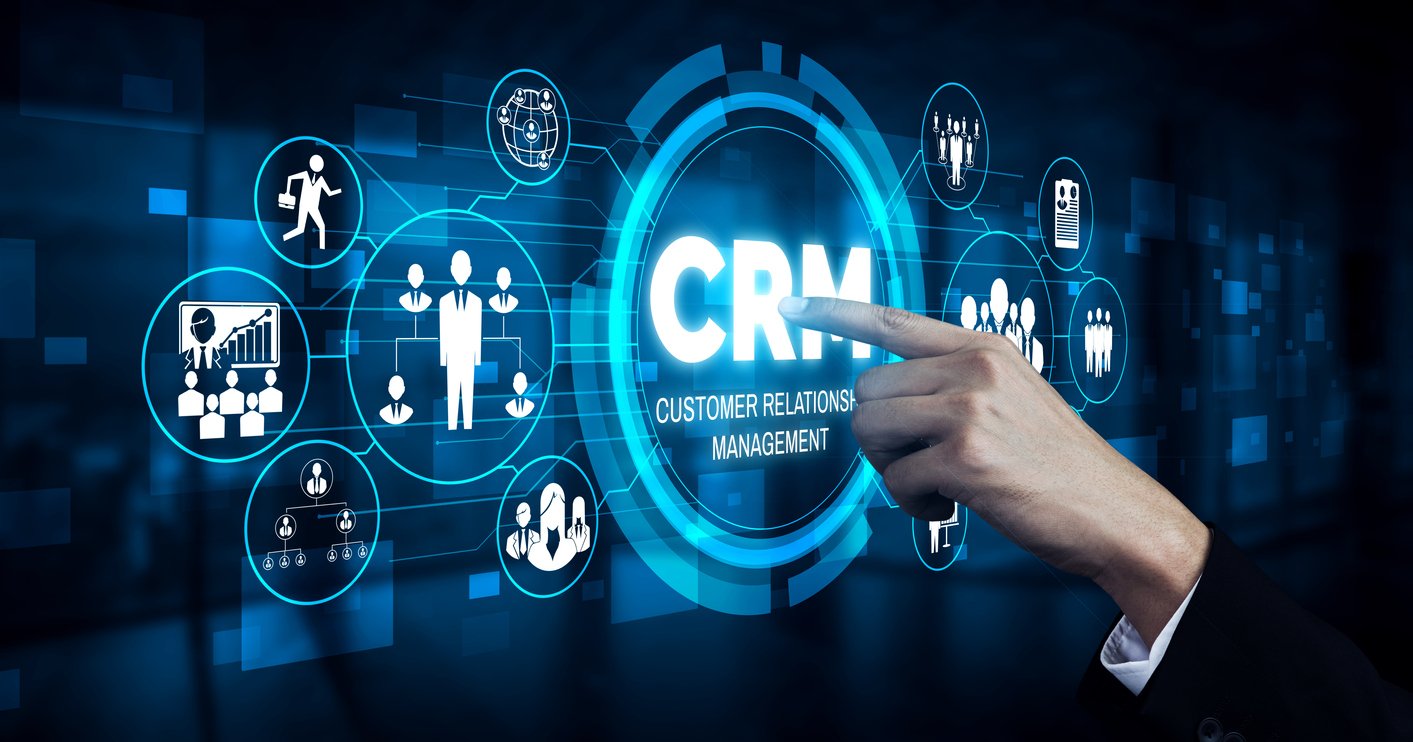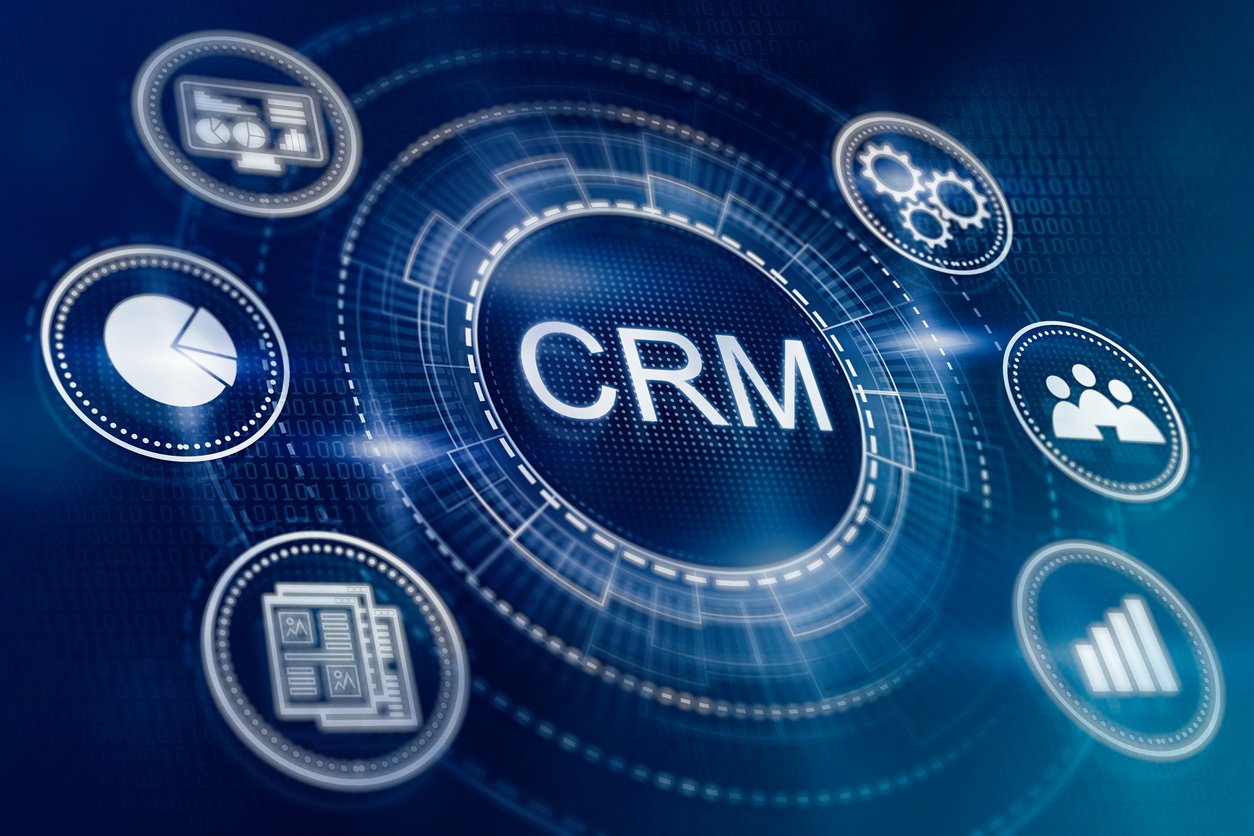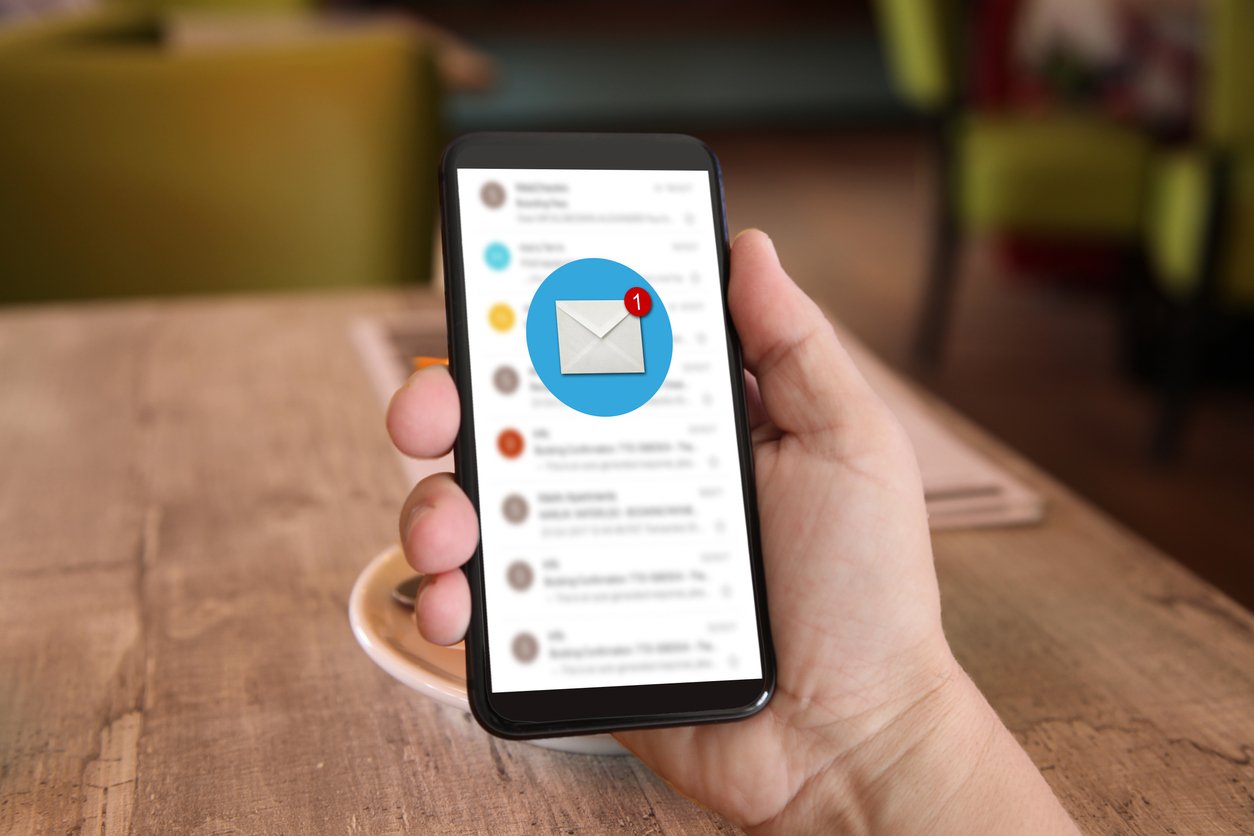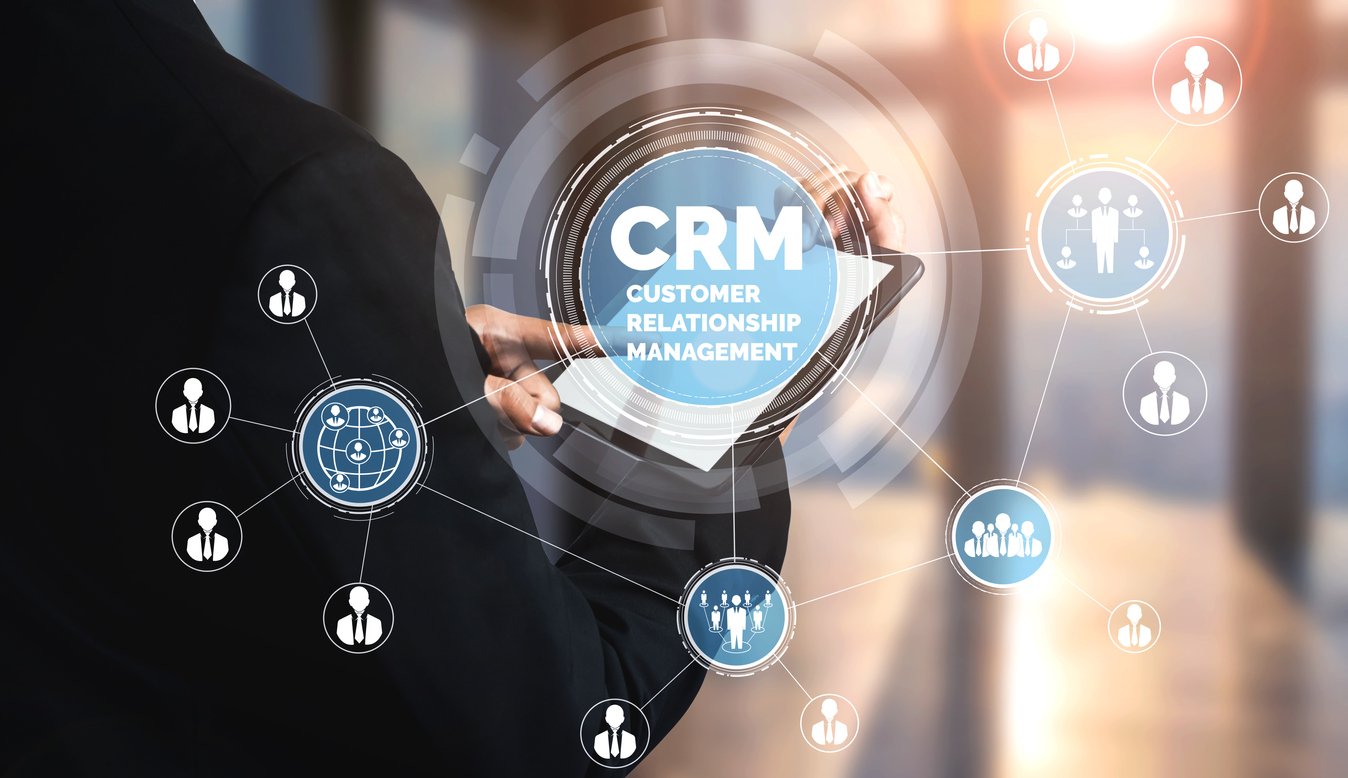
5 Types of Best Practices in CRM & Examples
 Updated on
Updated on
 By Bradley Kovacs
By Bradley Kovacs
Bradley Kovacs
Bradley has been passionate about technology since childhood, starting with Microsoft Flight Simulator at age six. In college, he automated his data e...
learn more
Bradley Kovacs
Bradley has been passionate about technology since childhood, starting with Microsoft Flight Simulator at age six. In college, he automated his data e...
Table of Contents
Table of Contents
CRM or Customer Relationship Management, is like fine wine.
It may start a little sour, but with the right blend of ingredients and patience, it can turn into something truly delightful.
As we all know, customer relationship management is all about building and maintaining positive connections with clients. This means that it's not just about making sales but also creating a strong bond.
But let's face it, not all of us are CRM sommeliers. That's why we're here to give you a crash course on the best practices in CRM.
This article shares why following best practices are recommended, provides a list of best practices in CRM, highlights the importance of data hygiene, showcases data migration best practices, and much more.
Before pouring the CRM sauce all over your customer's plate, remember, like with wine, you must let it breathe. Take your time with things, and most importantly, have fun with them.
So, grab a glass of your favorite drink, and let's dive into the world of CRM, where every interaction is a chance to make a lasting impression. Cheers!
Why is Having a CRM for Your Business Important?
You've got leads coming in from all over the place, customers you need to keep happy, and a team to keep on track. It's enough to make your head spin.
That's where a CRM system comes in. The right CRM software is one that helps you manage all your customer interactions in one place. It's like a digital Rolodex on steroids, but with some serious superpowers:
- Organization: No more scattered notes and sticky papers. A CRM keeps all your customer information – names, emails, phone numbers, interaction history, the whole shebang – organized and easily accessible.
- Automation: Repetitive tasks like sending follow-up emails or scheduling appointments can be automated, freeing up your time for more strategic activities. It's like having a B2B CRM best practices robot working behind the scenes.
- Insights: A CRM is a goldmine of data about your customers. You can track what they're interested in, how they interact with your brand, and where you can improve.
- Collaboration: A CRM makes it easy for your entire team to stay on the same page about customers. No more playing phone tag or wondering who spoke to whom last. It's like having a built-in CRM adoption best practices manual for everyone.
4 CRM Industry Best Practices
Any business can use three set rules to ensure it presses every bit of productivity and efficiency out of CRM implementation. These best practices in CRM provide the highest quality data while ensuring everyone on the team understands the various features and offers available.
1. Establish a Data Standard
Customer metrics and data should be the first goal after onboarding and implementation. It's vital to set data standards that are consistent across the organization. Each department has different kinds of data as well as metrics and KPIs.
However, CRM offers complete transparency to everyone in the business. Below are a few reasons to establish a data standard:
- Better decision-making
- Improved data quality
- Enhanced data security
- Increased efficiency
CRM software segments and retrieves the type of prospect information you want to use. For example, it can gather contact information from social media sites like LinkedIn. To personalize outreach content, sales and marketing teams may require information such as phone numbers, email addresses, or job roles.
Setting data standards early on can help startups and small businesses keep critical information intact so that when the organization scales, nothing is obscured.
2. Leverage Analytics

Analytics is a feature offered by most CRM software. If that is not the case, integrations or extensions usually exist to add on and provide analytical functions.
Because large organizations deal with a massive influx of customers daily, tracking interaction data and spreading it among divisions is recommended. Everyone from sales representatives to the company's CEO can utilize CRM solutions to translate contrasting activities into something usable.
Reporting and analytics can be customized, meaning the software is taught what statistics are more important and when to display them. It could be how, where, or when prospective clients become qualified leads. Agents have a complete sales process overview, allowing them to identify any pain points, stoppages, or inefficiencies.
Utilizing analytics in CRM can provide several advantages, including:
- Predictive analysis
- Better customer experience
- Improved customer segmentation
- Greater ROI
- Enhanced decision-making
- Increased efficiency
Reports are excellent for determining the profitability of your business's marketing efforts and seeing how each sales employee performs.
Enterprise resource planning software can also use reporting and analytical tools to track production processes, supply chains, and inventory levels. This can help employees plan shipping and deliverables and further streamline production.
Lastly, CRM analytics from the correct software can help organization proprietors spot trends in the market. CRM software is the perfect tool for developing and researching new services, goods, and products.
3. Consider the Customer Experience
There are two primary reasons businesses use customer relationship management software: It's a tool to improve staff productivity and boost the level of customer satisfaction your clients receive.
Hence, multiple best practices in CRM must be adhered to.
There are a few methods of creating and improving customer experiences with the functionalities of a CRM. Self-service is a feature of CRM software offering features that allow contacts and clients to assist themselves without contacting an agent. Businesses can use the self-service portal to provide the customer with the following:
- Community support pages
- Downloads
- FAQs
- Searchable knowledge base
These client portal features allow the customer to do tasks, such as checking an order's status, searching for information on a product or service, and confirming the date of an upcoming sales meeting.
Why is this on the list of best practices in CRM?
Allowing clients to assist themselves limits the time your team spends on customer interactions. The purpose of a CRM is to free up employees' time so they can concentrate on more arduous activities.
Utilize the customer-centric side of a CRM system to keep your customers happy and staff productive.
4. Take Advantage of Automation
Automation is the heartbeat of modern CRM strategies. Streamline repetitive tasks, automate follow-ups, and trigger personalized responses based on customer behavior. By harnessing the power of automation, you not only save time but also enhance accuracy and consistency in your processes.
Whether it's lead nurturing, data updates, or communication workflows, automation allows your team to focus on high-value tasks, propelling your CRM strategy to new heights.
CRM Implementation Best Practices

Customer relationship management systems are essential for modern businesses looking to improve customer interactions while streamlining sales and marketing processes. However, implementing a CRM system can be complex and time-consuming. Therefore, it's essential to follow best practices in CRM implementation to ensure a successful rollout.
Let's dive into the three best practices in CRM implementation.
Be Clear About Pain Points and Goals
The most critical best practice for CRM implementation is clearly defining and communicating goals and objectives to all stakeholders. This ensures everyone is on the same page and the final solution meets the organization's requirements. Companies can establish a roadmap for the project to keep all employees working towards the same end goal.
Before starting the CRM implementation process, it's crucial to determine the enterprise's specific requirements and how a CRM system can address those needs. This may involve identifying pain points in current operations or assessing the scalability and capabilities of different CRM platforms.
Once objectives and goals have been established, create a project charter of the implementations where you assign specific responsibilities to different team members and establish a timeline for the project.
Roll Out in Phases
Implementing a CRM solution is a fine art of balancing value, functionality, and time. Do it too quickly; users risk missing critical tasks or details and get overwhelmed. Take too long, and the system or project gets canceled because people lose interest.
It's essential to plan a CRM rollout in stages, ensuring all team members understand what is required of them before moving on to the next phase. The table below highlights the critical steps to rolling out a CRM.
|
Steps |
Description |
|
Planning and Preparation |
Conduct a thorough analysis of current processes and data, identify pain points, assess the capabilities of different CRM systems, define and communicate goals and objectives, create a project charter, and identify and involve key stakeholders |
|
Selection and Procurement |
Evaluate and compare other CRM systems, select the most suitable system, negotiate contracts and pricing with vendors, coordinate and schedule the installation and setup of the system |
|
Data Migration and Integration |
Develop a data migration strategy, transfer customer data from existing systems, integrate the CRM system with other relevant systems, and test the system for data accuracy and completeness |
|
Training and Adoption |
Provide comprehensive training to all users, encourage adoption by highlighting the benefits, and establish regular training sessions or support |
|
Rollout and Implementation |
Test the system thoroughly, roll out the system in stages or pilot groups, monitor the system's performance and make adjustments as needed |
|
Maintenance and Support |
Have a dedicated team responsible for the implementation and maintenance of the CRM system, regularly update and maintain the data, and have a plan in place for ongoing maintenance and support. |
Rolling out a new CRM system can be a daunting experience, but following these best practices will ensure a successful implementation to get the most out of your implementation. Effective communication and a dedicated support team will ensure that all internal or external issues are addressed timeously.
Ensure the Platform Is Customizable
When it comes to finding the CRM solution ideal for your business, it takes thinking long-term and not only for what's required today. Consider how your company could scale in the next 12 months and decide if the software will be able to keep up with this growth.
Organization owners should ask themselves the following questions:
- What does it take to change an existing automation process?
- Can the layout of the interface be changed later if required?
- What is the process for automating something new?
The best option is to opt for a future-ready cloud-based CRM platform that integrates with other third-party vendors. Besides eliminating costly software installs on hundreds of devices or computers, a cloud-based CRM can easily grow with an organization as it expands geographically and in size.
CRM Data Hygiene Best Practices

Develop a Data Hygiene SOP
Ensuring consistent data entry is critical to a CRM system's long-term success. Establish clear procedures to accomplish this by:
- Putting someone in charge of cleaning the data
- Determining the tools they need to perform the task
- Choosing someone who will train new team members
- Deciding what criteria of unengaged contacts to remove from the database
- Establishing a data governance team responsible for data hygiene and management
Consider all the relevant components to include in this process write them down and share this information with employees whose job duties involve data cleaning and preparing them for action.
Conduct a Data Audit
The process of identifying contacts is called a data audit. Take time to create a list of unengaged contacts, then segment them to find ones that come from unknown sources, are potential time wasters, or unsubscribes.
These contacts may be deleted, but people who last engaged with your content a while ago are reassessed. Gather insights into their profile through the CRM to find out what may re-engage them and drop them an email one last time.
Utilize Data Cleansing Tools
Manually deleting data is tedious and highly impractical. The potential for human error also increases significantly. Data cleaning software can remove invalid email addresses, identify common types, merge duplicate contacts, and even automate these procedures during specific periods.
When deciding on a data cleansing tool, look for one that offers data cleansing automation, bulk data formatting, and intelligent duplicate data detection.
While it is inevitable that insufficient data may enter into a CRM database, teams can minimize this by setting a data maintenance schedule and standards to maintain order and cleanliness.
With the option to outsource or automate data cleaning, it is easier to achieve results. Clean data is critical to successful marketing efforts.
Standardize How You Enter Data
Establishing standardized naming conventions is fundamental to ensuring consistency across your CRM system. This involves creating a set of rules that dictate how various data elements, such as company names, contact titles, or product names, should be entered.
For example, if your CRM system has fields for company names, decide on a format (e.g., Company Name, Inc. or Company Name Ltd.) and ensure that everyone adheres to it.
This consistency streamlines searches, reporting, and analysis, preventing duplicates and confusion.
CRM Tagging Best Practices

Utilize Tags to Organize CRM Data
Tags make it easy to find the required information by grouping and categorizing data. For instance, a business with multiple clients in various sectors can use tags to segment them by industry.
Customers related to a specific industry can be pulled up when required; tags can also be used for categorizing customers based on their locations or other criteria. Customer interactions can also be tracked with tags—for example, emails sent to prospects with keywords describing the message's information. Users can search through the emails later to find relevant clues or conversations that they can bring up with the client.
Tag Consistently
Finding the information required when tagging consistently makes data more accessible. It also ensures people across the organization utilize tags verbatim when they enter data into the CRM platform.
Using consistent formatting is an excellent best practice in CRM. For example, if customers are tagged by location, each country or state can be abbreviated with two letters. This makes data easy to search and keeps it organized.
It's also vital to view to determine the relevance of old tags. If a service or product has been added to the system, new tags may be required to reflect those adjustments.
Delete Unused Tags
Only using tags can make it easier to locate the required data on a cluttered CRM system. It slows the platform's performance as it takes up valuable storage space and may confuse the users.
To keep a CRM organized and running optimally, do a regular audit to determine which tags are no longer needed. This makes information more accessible and ensures that only relevant data is stored on the CRM.
CRM Data Migration Best Practices

Analyze Legacy Contacts
Preparing for migration requires evaluating legacy contacts and their associated data. Follow a strict data hygiene protocol that helps clean and streamline data while including input from stakeholders and primary users on errors, new contact information, and reviewing records for duplicates.
Determining how the information contained in contact records supports company goals is another area of focus. The table below shows a few specific data fields to consider, including:
|
Specific Data Fields |
Description |
|
Customer groups |
If the CRM system includes customer groups, do employees utilize them? Can industry fields segment them? Is it worth the effort to migrate these groups? |
|
Redundant fields |
Are there repetitive grouping in fields of your legacy data? If the data is still relevant, take time to standardize the information. This process is time-consuming, but it's worth it. |
|
Notes |
This field contains all additional contact information or preferences, such as birthdays, favorite colors, and shipping notes. How valuable is this information? Should this data be migrated? |
|
Custom fields |
While some campaigns are created for short-lived organization goals, other custom fields have long-term value. Take this time to decide which content is important and which is not. |
This process lets users locate content relevant to their data migration strategy. Documenting a complete list of fields is critical to implementing new improvements in the CRM system.
Import with Care
Data migrations can be tricky, with a lot of unexpected things occurring. Starting small is a helpful way to determine if the data import will go smoothly. Begin with smaller subsets of CRM data to test the process and save yourself a ton of time during the clean-up.
Analyzing the legacy system's existing customer data is one of the first steps in adequately importing data. This helps identify potential data issues or inconsistencies that must be addressed before migration.
It's also recommended to keep the old CRM platform running in the interim. This is a precaution in case there is a requirement for legacy data to be omitted during the initial data migration.
Decide on a Data Migration Completion Date
Besides evaluating the various data fields for migrations, knowing if all data is relevant to the contact is crucial. Team members can provide valuable input in this process because they deal with the prospects the most.
Interaction history and stale contacts are vital factors to assess during this process.
Historical data poses various uses for different enterprises. However, any information older than five years may seem excessive or need to be revised. Cutting down on CRM bloat requires setting a cut-off date for adjusting contact details.
Email CRM Best Practices

Create Your Email Subscriber List
Building an email subscriber list is one of the many challenges when attempting CRM email marketing. Purchasing an email list may sound like a better plan; however, that is not the case. Getting emails marked as spam, low open rates, high bounce rates, and those email addresses becoming unsolicited is a reality.
The best practice in CRM is to identify and qualify leads organically by utilizing software or tools that retrieve data from social media and other sources. Segmenting email subscribers by geographic locations, interests, demographics, or other factors ensures the right recipient receives the most relevant content.
Once categorization is complete, the CRM email marketing software can automate messaging for target segments and personalized drip campaigns. Another critical factor here is cleaning the email list regularly to avoid inactive email addresses, skewed metrics, bouncing, and fake details.
Personalize Customer Emails
Email marketing can be a powerful tool for driving sales and building customer relationships.
Personalization is critical to effective email marketing. Using the recipient's name, location, and other relevant information in your emails can make them more relatable and increase engagement.
At the end of the mail, add a clear call to action to tell the recipient what they should do next, whether visiting a website-signing up for a free trial, or making a purchase.
Ensuring client or prospect emails are relevant and concise increases customers' chances of opening them.
A/B Test Emails
Success usually is not found during or after your first CRM email marketing campaign. The best practices in CRM suggest that marketers A/B test or split test their emails to determine which strategy works.
A/B testing gives users information about what version of content will succeed with what type of recipients. It allows you to develop two or more versions of the same email campaign, each unique from the other.
Leverage Post-Sales Communications
While many businesses focus on using email within the CRM for pre-sales communication and lead nurturing, the true power of email lies in leveraging post-sales interactions. This is where CRM best practices truly shine, helping you transform one-time customers into loyal advocates. Here are some key strategies to consider:
- Personalized Welcome Emails: Instead of generic greetings, use CRM data to personalize welcome emails based on customer segments, product purchases, or specific interests.
- Proactive Feedback Requests: Use CRM automation to trigger emails at key moments after purchase, allowing them to easily share their thoughts and suggest improvements.
- Value-Added Newsletters: Don't just send promotional blasts. Craft segmented newsletters based on customer interests and purchase history. Share educational content, industry insights, or exclusive offers related to their needs.
- Reminder Triggers and Upsell Opportunities: Leverage CRM data to identify dormant customers or users who haven't engaged in a while. Trigger gentle reminder emails about unused features, relevant product updates, or limited-time offers.
- Birthday and Milestone Celebrations: Make your customers feel special! Use CRM data to personalize birthday greetings, anniversary emails, or milestone achievement acknowledgments.
- Customer-Centric Surveys and Polls: Gather valuable insights by sending targeted surveys and polls through your CRM. Ask about satisfaction levels, pain points, or feature preferences. This feedback helps you refine your product offerings and enhance the overall customer experience.
Best Practices in CRM - Final Thoughts
Like a fine wine, a successful CRM strategy takes time, patience, and a willingness to experiment to find the perfect balance.
By adhering to best practices such as segmentation, personalization, and testing, businesses can cultivate a loyal customer base that will raise a glass to their success. Remember, a CRM strategy is not a one-time process; it's an ongoing journey, so don't be afraid to try new things and keep evolving.
Ringy helps companies implement CRM best practices worldwide through its innovative user interface. The software's onboarding process is efficient, all customer data gets recorded in the system, and users can call directly from the platform.
It's the ideal solution for small to large organizations from financial services, law, insurance, higher education, and remote sales to keep track of customer and employee interactions.
Request a demo to see how Ringy changes how enterprises manage their customers.

Skyrocket your sales with the CRM that does it all.
Calling? Check. SMS? Check. Automation and AI? Check. Effortlessly keep in touch with your customers and boost your revenue without limits.

Take your sales to new heights with Ringy.
Sales in a slump? Ringy gives you the tools and flexibility you need to capture leads, engage with them, and turn them into customers.
Subscribe to Our Blog
Enter your email to get the latest updates sent straight to your inbox!
Categories
Related Articles




































































































